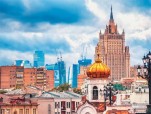
Traditionalism in High-Rise Construction
When in our reviews we dwelt on architectural and stylistic features of skyscrapers that were built in different parts of the world, we tried to emphasize certain distinctive features and specifics of tall buildings and their distinguishing guises, inherent to selected countries. Describing the stylistic diversity of modern buildings and their designs, we focused on the general methods of this or that trend.













